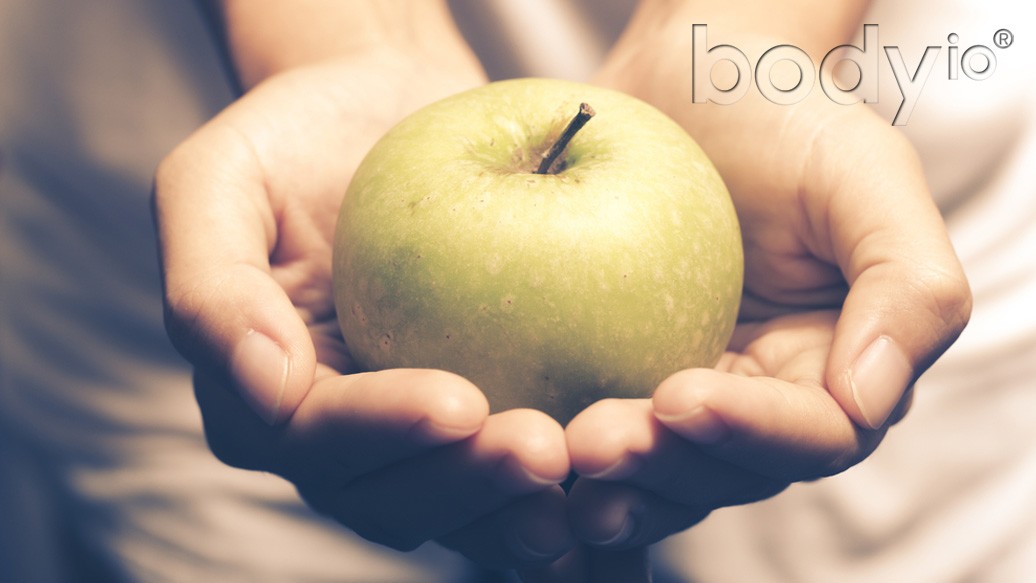ometimes, even I’m a little bit behind the times. The organic movement started oozing through the world slowly, like a pasty goo in the bowels of the nation while I sat through my first school room instruction. By the time I was studying theories on paths to quantum gravity, the movement had started to reap the benefits of the slick machinery of marketing. Rather than creeping, it was now running through the American marketplace at a hare’s pace—yet I still had no idea what the word “organic” meant when it came to food.
The term organic conjures imagery of a distant past where everyone grew their own food. It even takes us further back in time, to an epoch where we ran naked through the forest picking berries, nuts, and leafy greens from amongst the wilder, unsavory vegetation. This was organic, ergo it was natural—what nature intended.
This is the impression I was under when I moved to the San Francisco Bay Area in 1999 for a year long gig as a software developer. If you know anything about the Bay Area, you know that anything considered “closer to nature” readily gains a foothold here. Actually, I’m understating the case. It anchors itself 200 feet into the bedrock and refuses to shift regardless of science, common sense, or exorbitant cost. This is why Whole Foods—otherwise known as Whole Paycheck—found a home here after its unlikely beginnings in, of all places, Texas.
Now, if you’ve never been to a Whole Foods, you’re missing out. The fresh smells, luscious looking fruit, abundance of raw food stuffs, and palette rendered from nature’s color wheel treat the senses to what Whole Foods would have you believe is a stroll through the rain forests of South America—where everything you can imagine hangs low on the vine, ripe for the picking. Who wouldn’t buy an apple from one of their bins?
And those apples taste ambrosial—a reminder of how good original sin must’ve felt when Eve snubbed God, tasted the forbidden fruit, and handed sin and pleasure to Adam and all of humankind (for this, of course, we’re all forever indebted, even at the cost of eternal damnation). I bought organic apples for a week or two until that juicy first bite exposed a colony of mealworms. Mmmmmm: organic farming at its finest.
After that experience, I sliced every apple before eating it, until—for the second time that summer—I found another organic apple with mealworms. I’ve never knowingly eaten an organic apple since.
This experience made me wonder about something. How beneficial, really, is organically grown food?
Not very, as it turns out.
Bad Assumptions Make Good Marketing
Fear sells in America. So well, in fact, that Rachel Carson wrote a cautionary fable called Silent Spring (1962) about the dangers of modern farming and the use of synthetic pesticides. Of course, she’d attempted to write a scientific description of the dangers on the horizon, but as Dr. Bruce Ames (one of the world’s top toxicologists, whom I had the good fortune to interview) points out in the video below, Carson shunned her scientific training, choosing instead to write a biased piece about dangers which aren’t worth considering. She acted in the finest spirit of our current dietary gurus, picking one scientific paper to make a claim, and ignoring the majority of research that would falsify her claim. For all of Rachel Carson’s great achievements, her seminal work did little more than create a culture of fear that now surrounds modern farming.
Carson assumed, as we still do, that anything made by nature is safe at any level, and that anything synthetic is probably carcinogenic, even at the lowest possible dosage. This is a fair question to test, but in reality, the way we test for it may be intrinsically flawed. Scientists test for carcinogenicity by feeding rats the maximum tolerated dosage (MTD) of a chemical for the lifetime of the rodent, then checking for some correlation between cancer risk and the rate of ingestion[1-7]. Now, bear in mind that the MTD is the maximum dose that doesn’t immediately kill the animal, so it’s already being administered at a level that’s almost deadly. After the experiment is over, some statistics are calculated, and we get a thumbs-up or a thumbs-down for cancer risk.
Dr. Ames and his colleague Lois Gold decided to catalogue every known toxicity study done with rats, and they found something rather odd: 50 percent of all carcinogen studies show positive results—even for natural chemicals that we eat in far greater abundance than synthetics[1-8]. In other words, using this protocol is no better than flipping a coin and publishing a paper based on the outcome. (In our conversation, Dr. Ames suspects inflammation or nutrient malabsorption at MTD levels as the real culprit causing cancer and helps explain the coin-toss outcome.)
Dr. Ames and his colleagues went on to describe the relative dangers of synthetic pesticides compared to natural, and found that 99.99 percent of the carcinogens and poisons we ingest come from the plants themselves. Plants make poisons. For example, cabbage contains 49 naturally-occurring carcinogens. Broccoli contains 100 chemicals—half of which we classify as carcinogenic[1-7].
Think about this for a second. We measure the levels of synthetic pesticides in our food in parts per billion[1,9]. When we talk about the level of natural pesticides in foods, however, we measure in parts per thousand or million[10]. This means that our exposure to natural carcinogens in food is 10,000 times greater than our exposure to synthetics. The following foods contain massive levels (compared to synthetics) of 27 different naturally occurring chemicals that we know to be carcinogens: anise, apple, apricot, banana, basil, broccoli, brussels sprouts, cabbage, cantaloupe, caraway, carrot, cauliflower, celery, cherries, cinnamon, cloves, cocoa, coffee, collard greens, comfrey herb tea, currants, dill, eggplant, endive, fennel, grapefruit juice, grapes, guava, honey, honeydew melon, horseradish, kale, lentils, lettuce, mango, mushrooms, mustard, nutmeg, orange juice, parsley, parsnip, peach, pear, peas, black pepper, pineapple, plum, potato, radish, raspberries, rosemary, sesame seeds, tarragon, tea, tomato, and turnip[11].
At this point, maybe you’re thinking that organic and non-organic are just about the same, so let’s err on the side of organics. Organics, however, contain more toxic chemicals than non-organics. The organic varieties we breed to be pest-resistant become so by producing higher levels of toxins. As damage occurs from pests, the rate of toxic chemical production skyrockets. Synthetically treated plants can spend more time making the chemicals that make them healthy, which happen to be the same chemicals that make us healthy, making them more nutritious.
Take, for example, a breed of organic celery grown and marketed only a few years ago. Celery produces a family of toxins known as psoralens that act as a natural pesticide. Researchers developed a breed of celery that overproduced psoralens, making them impervious to pests. That same toxic reaction, however, makes people break out in a rash simply by touching the celery. In the early 90s, this organic toxin caused a national outbreak of skin rashes that took a little time to figure out…and it was 100% organic, i.e. natural[12]. Plants make chemicals that make us sick, end of story.

That would have been a hot picture to send to your boyfriend, but now you’ve got a rash on your hand and lips…that’s pretty much going to kill the mood.
Experts say, however, that organic fruits and vegetables contain more nutrients. Who are these experts? Whole Foods? Are they the expert? I doubt it. For all their rhetoric about selling nothing artificial, you can’t find anything more unnatural than agave nectar. It may occur naturally, but when was agave nectar ever a part of the natural human diet? Agave nectar tastes so sweet because it’s mostly fructose—up to 96 percent[13,14]. Keep in mind, the dangerous and dreaded high-fructose corn syrup used in processed foods is only about 50 percent fructose, the same as table sugar and evaporated cane syrup[15]. Natural doesn’t mean natural for humans.
As to the real question of nutrition, countless studies have concluded exactly what you might expect (if you’re a cynic): that organic and non-organic produce possess the same nutritional quality, and often, non-organic farming can produce nutritionally superior food[16-20]. This is why the United Kingdom, after reviewing over 150 studies, made it illegal to imply superior health on organically labeled food (you can read about it here).
What’s The Point?
The point is that the health claims of the organic food industry are equivalent to the fertilizer used on organic farms: bullshit, literally. Even arguments of sustained farming and environmental benefit don’t hold up. The real message that’s been lost in the onslaught of marketing and the hunt for higher profits is that you should buy your food locally—grown and raised as close to where you live as possible. Eating local protects the environment, while organic farming on the commercial scale that now exists doesn’t[21].
The organic food movement serves the interest of no one other than those producing supposedly organic food. Organic food still gets caked with pesticides—ones that the government has agreed to call organic[22-25], like rotenone, a known toxin that can causes Parkinson’s-like symptoms[26] and causes DNA damage in brain cells[27]. Even though the government banned it due to health concerns, we recently re-approved it for organic farming because of its power as a poison. If you’re going to poison the public, you might as well do it with a natural poison that you can use in as heavy of a dosage as you’d like because the government doesn’t monitor pesticide use for organic farms. (My thanks to Christie Wilcox and her article on ScientificAmerican.com for this tip-off.)
Do you really want to worry about your food, or the parts-per-billion worth of synthetic pesticides that make it into your or your children’s diet? The danger is insignificant compared to the havoc that obesity wreaks on health. Let’s worry about the important factors first and save the minutiae for later.

Even Jason of slasher-movie fame is getting into the act with his new mask made from 100% organic, grass-fed cow hide.
The organic movement is big business and nothing more. A new fast-food chain is in testing phases here, not far from where I live in the Bay Area called LYFE, or Love Your Food Everyday. It’s the organic McDonalds. Even the CEO is a former executive from McDonalds. LYFE is exploiting the word Organic—and the Paleo movement to a certain extent—to abuse agriculture in a way never before possible. Not because fresh produce couldn’t be distributed effectively enough to sustain a multi-million dollar food chain, but because without the word Organic and the implication of instantaneous health that it carries, you couldn’t charge enough of a premium to turn it into a multi-billion dollar company, which is their goal (read more).
A final note: I’m talking about produce, not animal products. There is a measurable difference in food quality when comparing grass-fed beef to feed-lot beef and so on[28]. The same argument still holds: buy local.
Take A Stroll Through Your Farmer’s Market
When I wander my local farmer’s market, I see a lush variety of fresh, colorful, aromatic fruits and vegetables that, most of the time, aren’t labeled organic. When I ask the merchants why they don’t choose to go organic, their answer invariably is, “We want to produce the healthiest food possible on the least amount of land with the least amount of pesticides. We can’t do that if we want to meet the guidelines for organic.” This is the philosophy I want used to produce the food I eat. What about you?
[expand title=”References (click to expand)”]
- Ames BN, Magaw R, Gold LS. Ranking possible carcinogenic hazards. Science. 1987 Apr 17;236(4799):271–280.
- Gold LS, Bernstein L, Magaw R, Slone TH. Interspecies extrapolation in carcinogenesis: prediction between rats and mice. Environ Health Perspect. 1989 May;81:211–219.
- Gold LS, Sawyer CB, Magaw R, Backman GM, de Veciana M, Levinson R, Hooper NK, Havender WR, Bernstein L, Peto R, et al. A carcinogenic potency database of the standardized results of animal bioassays. Environ Health Perspect. 1984 Dec;58:9–319.
- Gold LS, de Veciana M, Backman GM, Magaw R, Lopipero P, Smith M, Blumenthal M, Levinson R, Bernstein L, Ames BN. Chronological supplement to the Carcinogenic Potency Database: standardized results of animal bioassays published through December 1982. Environ Health Perspect. 1986 Aug;67:161–200.
- Gold LS, Slone TH, Backman GM, Magaw R, Da Costa M, Lopipero P, Blumenthal M, Ames BN. Second chronological supplement to the Carcinogenic Potency Database: standardized results of animal bioassays published through December 1984 and by the National Toxicology Program through May 1986. Environ Health Perspect. 1987 Oct;74:237–329.
- Gold LS, Slone TH, Backman GM, Eisenberg S, Da Costa M, Wong M, Manley NB, Rohrbach L, Ames BN. Third chronological supplement to the carcinogenic potency database: standardized results of animal bioassays published through December 1986 and by the National Toxicology Program through June 1987. Environ Health Perspect. 1990 Mar;84:215–286.
- Gold LS, Slone TH, Bernstein L. Summary of carcinogenic potency and positivity for 492 rodent carcinogens in the carcinogenic potency database. Environ Health Perspect. 1989 Feb;79:259–272.
- Ames BN, Gold LS. Chemical carcinogenesis: too many rodent carcinogens. Proc Natl Acad Sci U S A. 1990 Oct;87(19):7772-6.
- Gunderson EL. FDA Total Diet Study, April 1982-April 1984, dietary intakes of pesticides, selected elements, and other chemicals. J Assoc Off Anal Chem. 1988 Nov-Dec;71(6):1200-9.
- Janzen, D. H. Promising directions of study in tropical animal plant interactions. Ann Missouri Bot Gard. 1997. 64: 706-736.
- Ames BN, Profet M, Gold LS. Dietary pesticides (99.99% all natural). Proc Natl Acad Sci U S A. 1990 Oct;87(19):7777-81.
- Finkelstein E, Afek U, Gross E, Aharoni N, Rosenberg L, Halevy S. An outbreak of phytophotodermatitis due to celery. Int J Dermatol. 1994 Feb;33(2):116-8.
- Pätzold R, Brückner H. Mass spectrometric detection and formation of D-amino acids in processed plant saps, syrups, and fruit juice concentrates. J Agric Food Chem. 2005 Dec 14;53(25):9722-9.
- García-Aguirre M, Sáenz-Alvaro VA, Rodríguez-Soto MA, Vicente-Magueyal FJ, Botello-Alvarez E, Jimenez-Islas H, Cárdenas-Manríquez M, Rico-Martínez R, Navarrete-Bolaños JL. Strategy for biotechnological process design applied to the enzymatic hydrolysis of agave fructo-oligosaccharides to obtain fructose-rich syrups. J Agric Food Chem. 2009 Nov 11;57(21):10205-10.
- Guzmán-Maldonado H, Paredes-López O. Amylolytic enzymes and products derived from starch: a review. Crit Rev Food Sci Nutr. 1995 Sep;35(5):373-403. Review.
- Dangour AD, Dodhia SK, Hayter A, Allen E, Lock K, Uauy R. Nutritional quality of organic foods: a systematic review. Am J Clin Nutr. 2009 Sep;90(3):680-5. Review.
- Crinnion WJ. Organic foods contain higher levels of certain nutrients, lower levels of pesticides, and may provide health benefits for the consumer. Altern Med Rev. 2010 Apr;15(1):4-12. Review.
- Magkos F, Arvaniti F, Zampelas A. Organic food: nutritious food or food for thought? A review of the evidence. Int J Food Sci Nutr. 2003 Sep;54(5):357-71. Review.
- Williams CM. Nutritional quality of organic food: shades of grey or shades of green? Proc Nutr Soc. 2002 Feb;61(1):19-24. Review.
- Bourn D, Prescott J. A comparison of the nutritional value, sensory qualities, and food safety of organically and conventionally produced foods. Crit Rev Food Sci Nutr. 2002 Jan;42(1):1-34. Review.
- Reijnders L, Soret S. Quantification of the environmental impact of different dietary protein choices. Am J Clin Nutr. 2003 Sep;78(3 Suppl):664S-668S. Review.
- Drozdzyński D, Kowalska J. Rapid analysis of organic farming insecticides in soil and produce using ultra-performance liquid chromatography/tandem mass spectrometry. Anal Bioanal Chem. 2009 Aug;394(8):2241-7. Epub 2009 Jul 5.
- Iannotta N, Belfiore T, Brandmayr P, Noce ME, Scalercio S. Evaluation of the impact on entomocoenosis of active agents allowed in organic olive farming against Bactrocera oleae (Gmelin, 1790). J Environ Sci Health B. 2007 Sep-Oct;42(7):783-8.
- Isman MB. Botanical insecticides, deterrents, and repellents in modern agriculture and an increasingly regulated world. Annu Rev Entomol. 2006;51:45-66. Review.
- DiMatteo K. Pesticides and organic agriculture. Environ Health Perspect. 2004 Nov;112(15):A865; (Be sure to read the editor’s comment.)
- Höglinger GU, Oertel WH, Hirsch EC. The rotenone model of parkinsonism–the five years inspection. J Neural Transm Suppl. 2006;(70):269-72. Review.
- Swarnkar S, Singh S, Goswami P, Mathur R, Patro IK, Nath C. Astrocyte Activation: A Key Step in Rotenone Induced Cytotoxicity and DNA Damage. Neurochem Res. 2012 Jul 31. [Epub ahead of print]
- Cordain L, Eaton SB, Sebastian A, Mann N, Lindeberg S, Watkins BA, O’Keefe JH, Brand-Miller J. Origins and evolution of the Western diet: health implications for the 21st century. Am J Clin Nutr. 2005 Feb;81(2):341-54. Review.
[/expand]














